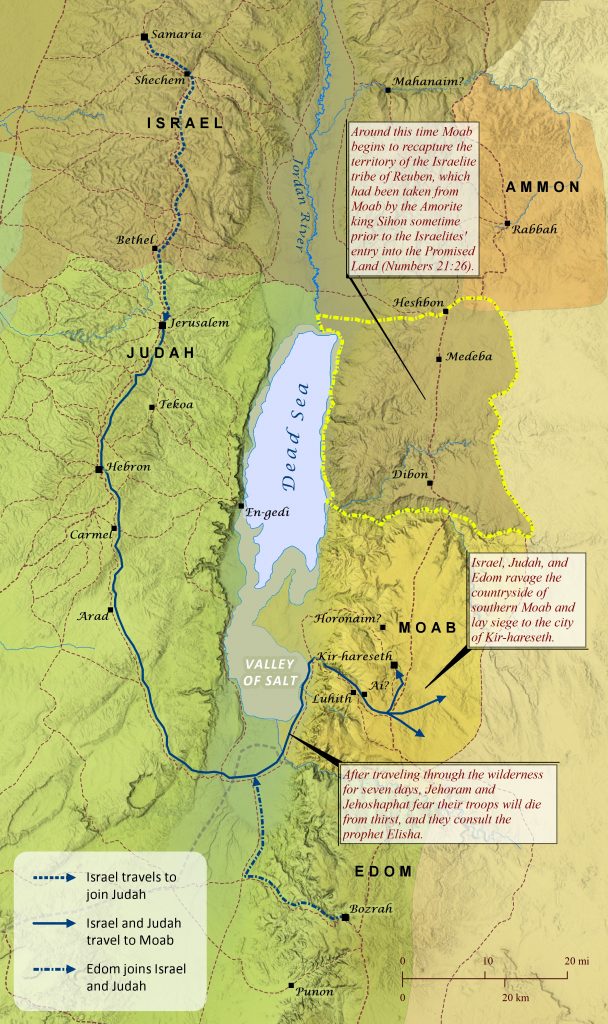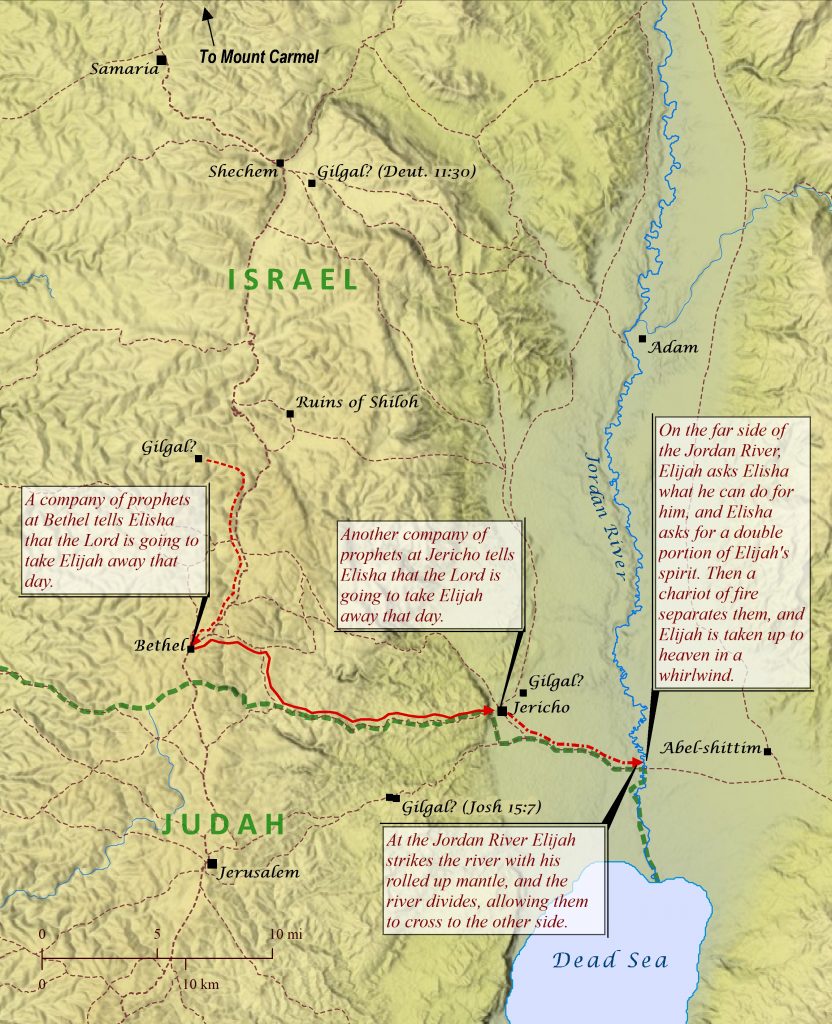2 Kings 3
Soon after King Jehoram ascended to the throne of Israel in 852 B.C., he invited King Jehoshaphat of Judah to go with him to attack Moab. The nation of Moab had revolted against Israel’s rule after King Ahab died in 853 B.C. (2 Kings 1:1), and then Moab immediately formed an alliance and attacked Judah (1 Chronicles 20; see map). King Jehoram’s intent in attacking Moab was no doubt to bring them back under Israel’s rule. Jehoshaphat agreed to help Jehoram, and apparently King Mesha of Edom joined them as well, since Edom was still subject to Judah at this time. They chose to approach Moab from the south instead of the north, perhaps to avoid both the nation of Ammon and also the tribal territory of Reuben, which Moab had been striving to recapture for many years (see map). Though the passage mentions that the king of Edom set out on the journey with the other two kings, it is likely that Edom’s full army met up with the other armies further south. After marching for seven days, the armies were running out of water, so they consulted the prophet Elisha, who must have been in the area at the time. Elisha foretold that a nearby stream would be soon be filled with pools of water even though it would not rain there, and the armies of Israel would conquer every fortified city of Moab and ruin the land. The next day water flowed into the area from the direction of Edom. This must have occurred near the border of Moab, because the Moabites saw the pools of water as well. The Moabites mistook the water in the morning sunlight for blood from the armies fighting each other, and they attacked them, expecting to seize the plunder. Instead, the armies of the Israelite alliance rose up and attacked them, and the Moabites fled. The forces of the Israelite alliance pressed on to Moab itself and conquered all the fortified cities and ruined the land, as Elisha had foretold. Only the fortified city of Kir-hareseth withstood their attack. King Mesha of Moab attempted to break through the Edomite line of the Israelite alliance, but his plan failed. So he sacrificed his firstborn son and offered him as a burnt offering on top of the wall, causing great wrath to come upon Israel, and the armies of the Israelite alliance withdrew to their own land.





